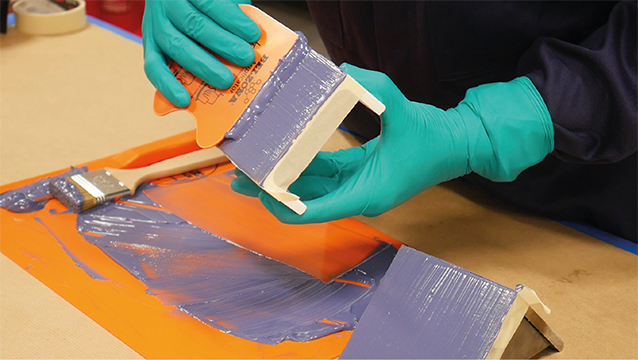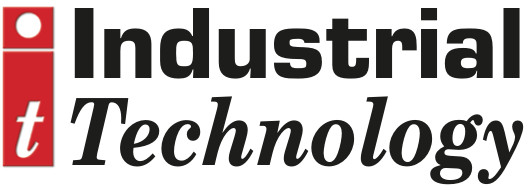
Posted to News on 25th May 2023, 10:30
Strengthening the bond with reliable structural adhesives

When identifying solutions that can offer assurance and longevity, the maintenance and reliability of assets repairs can be challenging. Ian Wade, technical services manager at Belzona, looks into the use of structural adhesives as the first-choice solution.
Structural adhesives can be used for affixing metal substrates or components as they provide high modulus and high strength. However, they are not currently internationally recognised like the traditional methods, even though adhesives are already used in a wide range of industries, such as aerospace, rail, and construction.
Traditional practice such as welding, riveting, nuts and bolts and mechanical fixing are perceived as the go-to method. However, they all have their inherent inadequacies. Welding can be hazardous to health, riveting, nuts and bolts concentrate the stress locally, while mechanical fasteners can concentrate stress.
Adhesive bonding is the joining of similar or dissimilar members together while creating permanent high strength bonds which can transfer structural stress without loss of structural integrity. Regardless of the joint type used, it is important to understand the different stresses that are imparted onto a bonded assembly. Adhesives perform best when the stress is two-dimensional to the adhesive, allowing the force to be applied over the entire bond area.
Joints that are well designed for adhesives place most of the stress into compression or shear modes; adhesives perform worst when stress is one-dimensional to the adhesive, concentrating the load onto the leading edge of the bond line. Joints placing stress into cleavage or peel concentrate the stress onto the leading edge, which may lead to premature bond failures, especially if subjected to vibration, impact or fatigue.
Bonds of high strength are obtained after cleaning of the substrate by removal of any contaminants followed by the roughening of the substrate generally in the form of grit blasting to international recognised standards; this is why surface preparation is critical to success regardless of what type of adhesive is used.
Bonding types
There are three types of bonding that are important to achieve to ensure good adhesion. These are: adhesive, chemical, and mechanical. Adhesive relies on surface energy to generate adhesion to the substrate, while chemical relies on chemical bond formation and electronic bonding to produce adhesion. Mechanical adhesion is due to the creation of an irregular profile that allows a deeper profile to be produced.
There are two types of failure mechanisms associated with structural adhesives:
Cohesive failure occurs in the bulk layer of the adhesive material. This failure mode is limited by the strength of the adhesive material and can be caused by insufficient curing of the adhesive and applications at a greater thickness than that recommended among others.
Adhesive failure occurs when the mechanical adhesion between the adhesive and the parts being joined is overcome by the loading. This failure mode is associated with inadequate surface preparation, presence of contaminants, or insufficient curing of the adhesive among others.
A new product developed by Belzona is a novel, two-component, solvent-free toughened epoxy adhesive material. Belzona 7311 provides high adhesion to metallic substrates while also being able to withstand high movement or cyclic fatigue in comparison to general epoxy materials.
It has been fully tested for cleavage adhesion, tensile shear adhesion, tensile fatigue resistance and impact resistance according to internationally recognised standards, as well as non-standard testing to assess the relative flexibility of adhesives when applied to a metallic substrate.
Several conclusions can be drawn from the use of Belzona 7311 as a solution for the repair or maintenance of assets. Belzona 7311 offers high resistance to structures that are subjected to forces such as peel, cleavage, vibration or cyclic loading. These include, but are not limited to, support brackets for fire deluge systems, internal and external fixtures on process equipment, wear pads and wind girders on storage tanks.
As Belzona 7311 offers an array of additional practical features including ease of application, ability to hold its own structure when placed in vertical applications and superior adhesion to metallic substrates, the toughened epoxy can be used on structural support reinforcements, load transfer supports and metallic staircases and ladders.
Plate bonding to repair thinning or through wall defects on areas such as pipe/piping, process equipment, storage tank floating roofs and platform decks can utilise Belzona 7311 as it offers high impact resistance and flexural properties.
Finally, Belzona 7311 has been optimised for metal-to-metal adhesion and exhibits an extensive data list with over 20 tests solely based on adhesion. The performance data can be used for Finite Element Analysis (FEA) or simulations to aid in bond designing or qualification of the adhesive in areas that would normally be seen as high risk for standard epoxies such as handrails and walkways.









